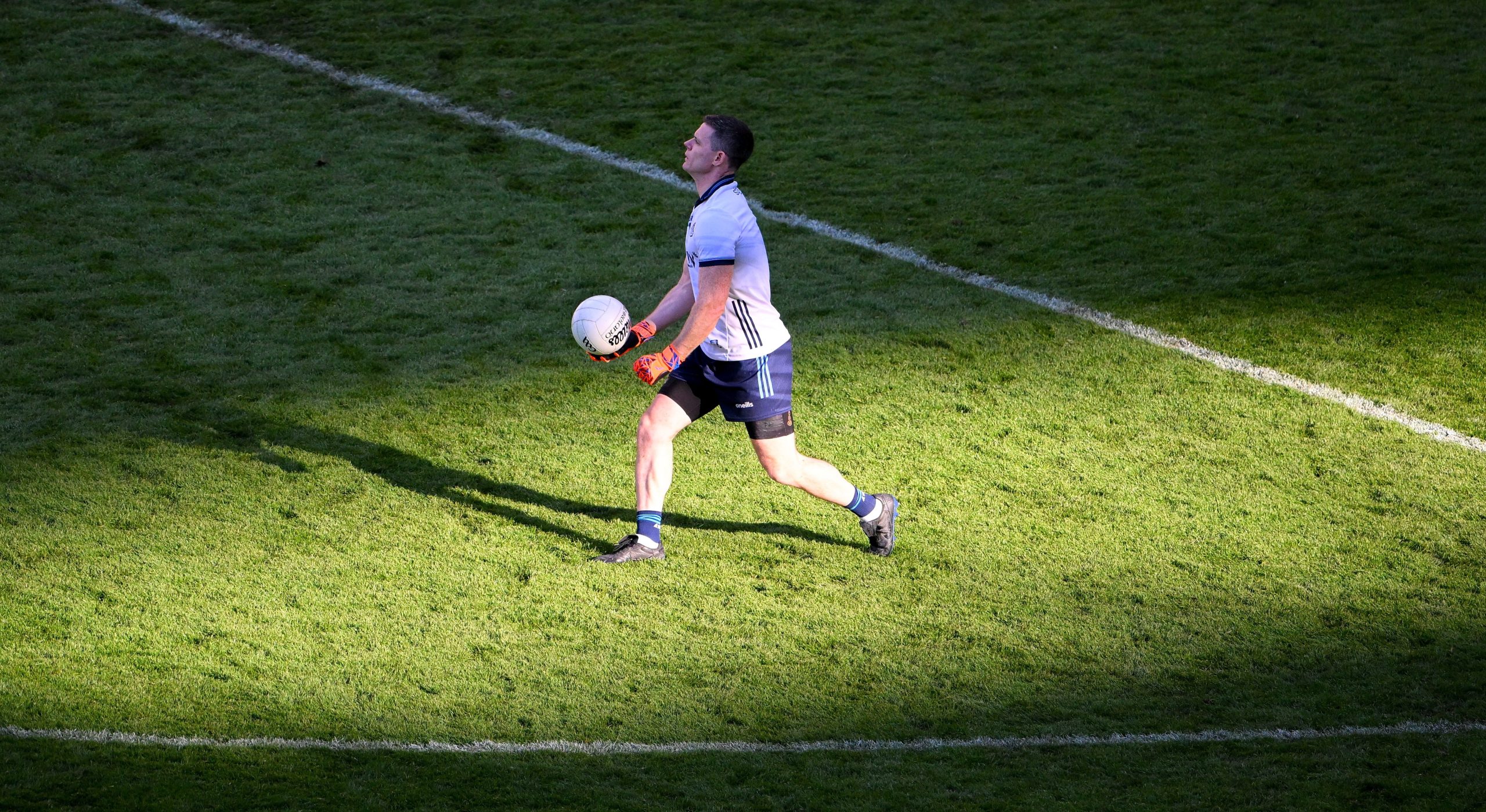‘THE rules of Piggy in the Middle: Two players pass a ball to each other, while a third player tries to intercept the pass. The third player is called the Piggy in the Middle. After each successful pass, the players on the outside chant ‘Piggy in the Middle.’
Little did the creator of Piggy in the Middle think that one day his children’s game would be incorporated into the fabric of Gaelic football.
Last weekend, with four minutes to go in the vital Knockmore v Claremorris championship match, Knockmore had a kickout. They needed only to hold possession to win the game. The short kick out was accurate and the corner back worked it back to the full back. The full back urgently transferred it to the keeper, and as soon as the keeper had it, it was Piggy in the Middle time. The hapless Claremorris full forwards looked like idiots as they chased and waggled their arms about, trying to catch thin air. At least the Knockmore boys spared them the humiliation of chanting ‘Piggy in the Middle.’ You know the rest.
In the 2017 All Ireland final, in the 76th minute, with Mayo a point behind, David Clarke miscued his kickout over the sideline near his own 21. Bernard Brogan grabbed the ball and gesticulated to his team mates, signalling that they needed to hold possession. He kicked short to a team mate and with Mayo tackling frantically, Dublin worked it back to Stephen Cluxton. The moment he had it, it was over. Piggy in the Middle commenced, with Cluxton calmly fisting the ball over a Mayo forward’s head to a team mate, then shifting position, taking the return pass, then a handpass to the other wing and so on. Five times Cluxton took possession and calmly laid it off as the clock wound down. Almost three minutes after that sideline (at 78:50) Joe McQuillan blew the final whistle.
Piggy in the Middle not only allows teams to kill the game, it also makes it pointless for the opposing forwards to push up high on the defenders, since all they have to do is get it back to the goalie.
As a result of the previous Rules Committee doing nothing about this blight on the game, this is what happens now in every match: The opposing team might push up on the kickout, but even if they do, as soon as the first defender has taken the kick out and gets it to a team mate (generally his full back), they drop back into their own half.
Piggy in the Middle, after all, is a game for young children and it is absolutely pointless (comical even) to start charging towards the goalie to try to tackle him or intercept the pass over your head.
This has the knock on effect of forcing the opposing team to drop back into their defensive area. What is the point of them wasting their energy, pushing up and tackling when there is a spare man? The second knock on effect is that the team in possession then move the ball forward slowly and laterally, often soloing on the spot or walking forwards, since the defence is now in position inside its own half and a quick attack is impossible.
The rule I have proposed is simple: The goalkeeper may not take a pass from an outfield player. It will work at all levels. It will remove one of the two core problems that have ruined the game (the other being the sweeper/zonal defender). With this rule, the opposing team is immediately incentivised to push up and tackle the defence. If a corner back is captured, he can no longer casually knock it back to the goalie. Like when I was playing, the corner back will have to look up and try to play out, instead of the depressing modern rigmarole of playing keep ball with the goalie while the crowd groans. This rule will make short kick outs very risky. It will incentivise long kick outs. It will also force defenders in possession from open play (after an interception or successful tackle) to look up and play out, rather than simply transfer the ball to the keeper and resume the dull routine.
This rule, as you can see, would have a very strong positive impact on the game and a number of exciting knock on effects. The keeper would go back to being a keeper (as it was when I played). The defenders will have to play more adventurously. It will encourage them to break out at pace and to kick the ball. The opposing team will be rewarded for pushing up and tackling. A turnover in the scoring area could spell disaster. The team ahead could no longer kill the game by holding possession for four minutes. The opposing team would push up to try to win the game. It would be….exciting.
The Rules Review Committee are not as far as I know considering this. Instead, they are considering two pieces of complicated tinkering (like the last Committee):
1. A goalie can only receive the ball in the large rectangle if the player playing the ball to him is also in the large rectangle.
2. A goalie can also receive the ball from a team mate beyond his 45 metre or 65 metre line.
The problem with this review committee is that it is dominated by managers. The rules that I have suggested will be great for players and spectators. They will not however be popular with managers. Since Jimmy transformed the game in 2011, Gaelic football has become a game for managers. And managers, as Kieran McGeeney put it, “are not in the business of entertainment.” Holding possession, running the clock down, dropping back into the zonal defence, patient lateral movement of the ball, no risks, no adventure.
Managers now own the ancient game. High time it was returned to the players and the GAA community.
Receive quality journalism wherever you are, on any device. Keep up to date from the comfort of your own home with a digital subscription.
Any time | Any place | Anywhere














